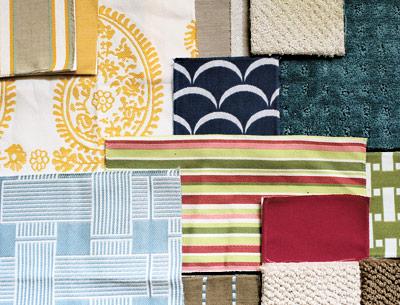Kid, Pet, and Family-Friendy

Barbara Feldman, an East Hampton interior designer, has found her calling, and it turns out to be a composite of her previous careers. A former designer of commercial and medical interiors, a real estate agent, and a house stager, she reinvented herself not long ago after analyzing the demographics of the South Fork and realizing that a plethora of young families live here. “They need a different kind of design,” she said.
While many young families own second homes here and “want to get out of the pool and sit on the couch” without worry, “they still want a stylish house,” she said. Her concentration now is on creating “kid and pet-friendly homes” that incorporate materials that are hypoallergenic, antimicrobial, durable, nontoxic, safe, and green. But in doing so, she said she had not compromised her aesthetics. “Otherwise the whole thing would be meaningless.”
There was just one problem. When she was designing “very styled, high-end, V.I.P. hospital facilities,” she was all too aware that most materials that meet health requirements were “really ugly.”
In hospitals “you have to deal with some of the unpleasantness of life,” she said. “Vomit, urine, blood, Betadine. . . . It was a challenge to make [rooms] look beautiful. . . hands were tied by unsophisticated technology at the time.” But that was the ’90s. Fast-forward to the present, and the good news is that materials have evolved.
These days, Ms. Feldman spends up to 15 hours a week seeking products — from furniture to carpets to paints and wall coverings — that are nontoxic and can be cleaned with bleach, while also being “beachy chic.” And she has stockpiled an assortment of fabrics to fit most design palettes.
“Stains like red wine, mud, mustard, tomato sauce, and chocolate,” are, she said, the banes of everyday life. However, with cutting-edge fabrics, a swipe with bleach will remove an offending blot (not the color or pattern) while killing germs at the same time. “When puppies piddle you get a nice big yellow stain,” she said. “Not with this stuff.” Many of her products are also odor-resistant.
Most of the new fabrics were primarily conceived for the hospitality industry; while attractive, they are tough. Ms. Feldman can even quote the scores they get on something called the Weezenbeck test, which measures durability by how long it takes to destroy a material. A good rating, she said, starts at 10,000. Most of the fabrics she uses score between 12,000 and 60,000, some going up to 100,000. About the only wear and tear she can’t guarantee against is cat scratching, but even that, she said, can be minimized.
Antimicrobial properties are “built into the yarn itself,” and she provides upholstery fills that don’t carry allergens like mold or dust mites. Most are also extremely flame retardant, she said.
Her design work is not all about materials, however. She also focuses on child safety, finding and suggesting furniture that is stable or has rounded corners, and “mechanisms that will keep them from getting into cabinets with cleaning agents or sharp objects.”
With calls coming in from prospective clients and builders these days, Ms. Feldman is convinced she’s onto something with wide appeal. “The future has arrived,” she said.
